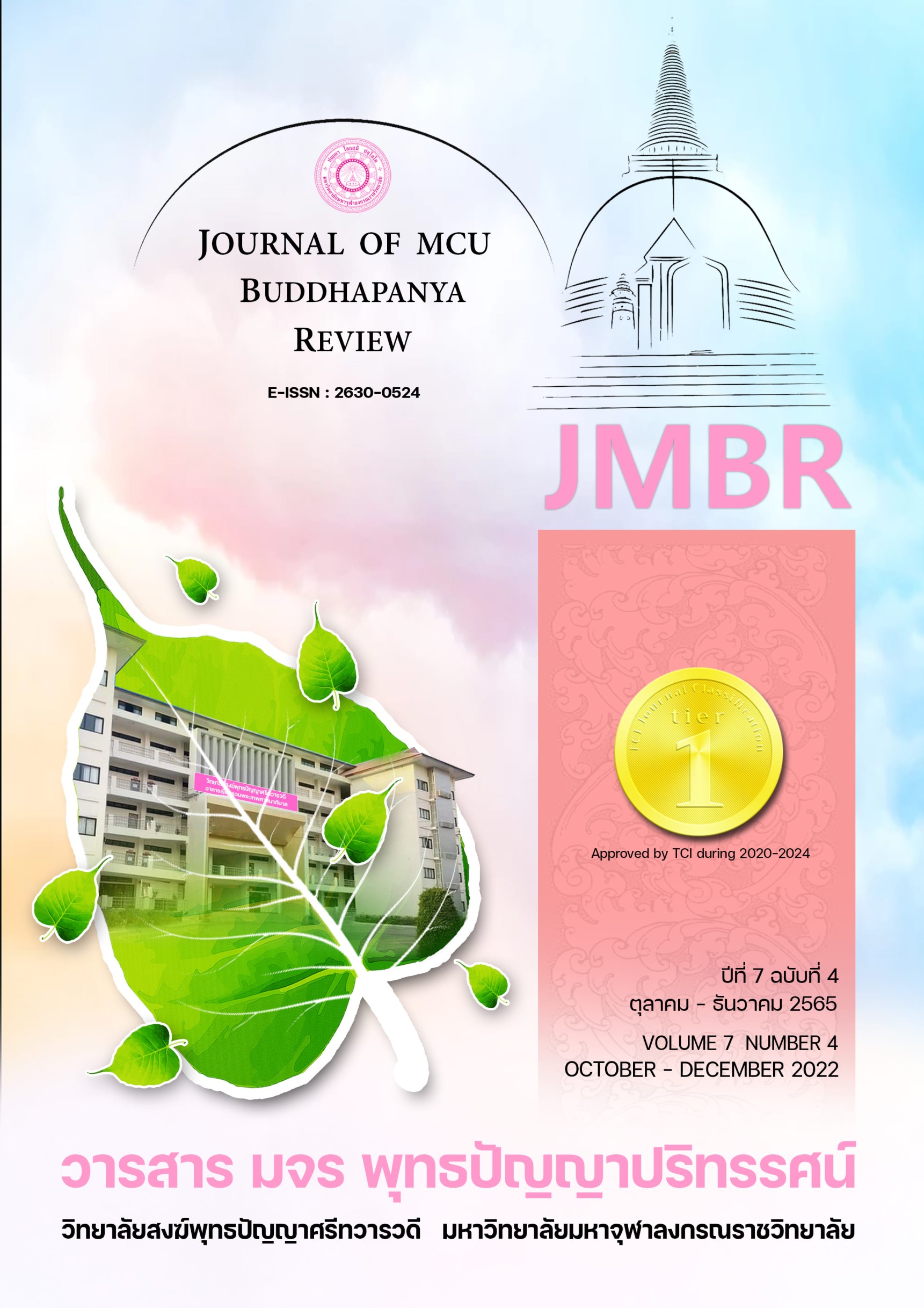รูปแบบการจัดการความขัดแย้งในองค์การบริหารส่วนตำบลในจังหวัดนครปฐม
Keywords:
Model, Conflict Management.Abstract
This research paper is a mixed method research study between qualitative research and quantitative research. Apply the concept of conflict levels. And conflict management guidelines as a research framework, research area is the sub-district administrative organization in Nakhon Pathom province. The sample group consisted of 382 personnel under the Sub-district Administrative Organization in Nakhon Pathom Province. (Proportional Stratified Random Sampling). The sampling was done by a simple random sampling method, and then the sampling was done by a Systematic Random Sampling. There are 2 types of research instruments: 1) interview form, 2) questionnaire, analyze the data. By the quantitative research section the statistics used to analyze the data consisted of percentage values. Mean and Standard Deviation and multiple regression analysis methods qualitative research Use it to analyze content and write a descriptive description. The findings of the research were found as follows:
The level of conflict in the Sub-District Administrative Organization in Nakhon Pathom Province found that the overall opinion was at a moderate level (= 2.96). (= 3.04) while the level of conflict in the sub-district administrative organization in terms of structure was the least mean (= 2.91).
Level of conflict there was a positive correlation with the conflict management approach in the administration of the Sub-District Administrative Organization in Nakhon Pathom Province. The overall picture is high. Statistically significant at 0.01 level with a correlation between 0.924 – 0.975
Conflict Management Model in the Administration of Sub-District Administrative Organizations in Nakhon Pathom Province from personnel conflicts Most of them used a compromise method, 40.3%, followed by a power of judgment at 28.0%. The least used method was confrontation. Only 5.5 percent, in finance, mostly used the decision-making power at 42.8%, followed by the compromise method at 23.8%. The least used method was ignored. Only 0.5 percent in terms of materials and equipment Most of them used the diagnostic power method, 45.9%, followed by the compromise method, 27.2%. The least used method was ignored. Only 1.8 percent in management Most of them used the compromise method at 36.7%, followed by the decision-making power method at 27.0%. The least used method was neglect. Only 4.4 percent
References
โกวิทย์ พวงงาม. (2549). อบต.ในกระบวนทัศน์ใหม่ พัฒนาสร้างเครือข่ายและเสริมความเข้มแข็ง. กรุงเทพมหานคร: วิญูชน.
จิรประภา อัครบวร และประยูร อัครบวร. (2552). การบริหารงานภาครัฐในรูปแบบเครือข่าย. กรุงเทพมหานคร: โรงพิมพ์ ก.พลพิมพ์
ธีระ รุญเจริญ. (2550). ความเป็นมืออาชีพในการจัดและบริหารการศึกษา: ยุคปฏิรูปการศึกษา. กรุงเทพมหานคร: ธนบรรณปิ่นเกล้า.
วิวัฒน์ เอี่ยมไพรวัน. (2550). เอกสารการสอนชุดวิชาสถาบันและกระบวนการทางการเมืองไทยหน่วยที่ 3. นนทบุรี: มหาวิทยาลัยสุโขทัยธรรมาธิราช.
สํานักงานคณะกรรมการพัฒนาระบบราชการ. (2551). แผนยุทธศาสตร์การพัฒนาระบบราชการไทย (พ.ศ. 2551 - พ.ศ.2555). กรุงเทพมหานคร: ภารกิจการเผยแพร่และสนับสนุนการมีส่วนร่วมในการพัฒนาระบบราชการ สํานักงานคณะกรรมการพัฒนาระบบราชการ.
Downloads
Published
How to Cite
Issue
Section
License
Copyright (c) 2023 Journal of MCU Buddhapanya Review

This work is licensed under a Creative Commons Attribution-NonCommercial-NoDerivatives 4.0 International License.


